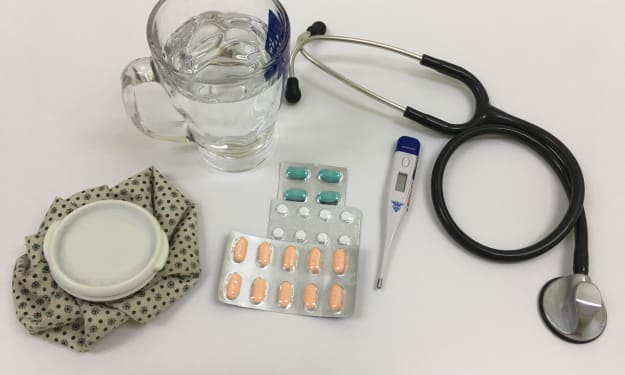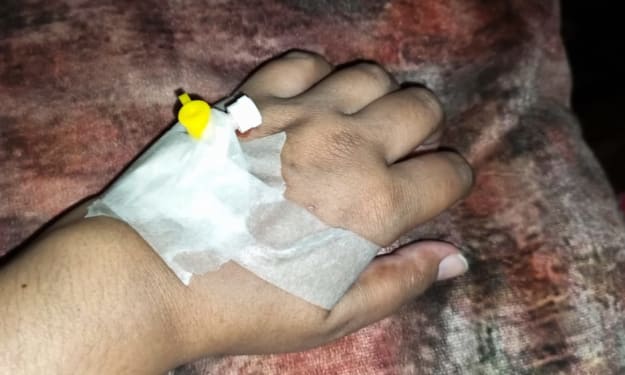The Vagina and the unwelcome guest (Yeast infection)
Vagina's worst enemy

Various different types of microorganisms live in the vagina. Some, like Lactobacilli, are more frequently found than others. By lowering the pH of the vagina, these bacteria's acid limits what can survive there and protects against some infections. Additionally, small amounts of candida yeasts are frequently present. These fungi are typically not harmful. While other microorganisms, like Lactobacilli, compete with them for resources and space, the body's immune system controls them. But Candida yeasts can also spread infections under specific circumstances.
Three out of every four people with a vagina experience vaginal thrush or yeast infections, which are typically caused by one species called Candida albicans. So what causes a yeast infection exactly? Mold-changing yeasts include Candida albicans. And Candida albicans may take on their disease-causing forms when the balance within the vagina is disturbed, such as when the pH rises or there are fewer microbes to compete with it. They grow and change, losing their rounded structures in favor of hyphae, which are long, threadlike forms.
Then, they release enzymes that penetrate the tissue and break down the epithelial cells lining the vagina. Itching, burning, swelling, and redness are some of the most recognizable symptoms of yeast infections that are produced when immune cells rush to the area. The fluid that is frequently flushed from the vagina to keep it healthy and clean, may also change along with these symptoms. Due to the vagina's increased release of Candida and epithelial cells during a yeast infection, discharge may thicken and turn whiter. Some significant factors, such as the use of antibiotics and lowered immunity, can increase a person's susceptibility to vaginal yeast infections.
A person's body may struggle to effectively control Candida if their immune system is already compromised due to illness or another factor. Additionally, when used to treat bacterial infections, antibiotics not only eradicate harmful bacteria but also helpful ones like Lactobacilli, which facilitates Candida growth. Yeast infections are facilitated by a variety of additional factors. Diet and hormonal changes impact the vaginal microbiome. Semen can alter the pH of the vagina because it is relatively basic. Tight, impermeable, and damp clothing incubates moisture and is thought to promote a more favorable environment for Candida. The protective mucus coating the vagina can become damaged by soaps, which makes it easier for Candida to infiltrate. Because of this, many medical professionals advise simply washing the vulva with water. Furthermore, it's crucial to wipe the vagina from front to back in order to prevent reintroducing Candida and other potentially harmful microbes.
The majority of yeast infections are minor and go away in two weeks. Antifungal drugs typically provide effective treatments by lowering the number of Candida cells, which enables the immune system and other microorganisms to regain control. Interesting enough, adding more yeasts may be the answer to treating some yeast infections. Probiotics that contain the harmless yeasts we use in baking and brewing have shown promise in preliminary studies for controlling Candida while lowering inflammation. However, some yeast infections call for more involved treatments.
At least four yeast infections per year are experienced by 5–10% of people with vagina. The root cause for some of those appears to be genetic. Gene variations in some people make it more challenging for their immune systems to identify and control Candida cells. However, the reason why many others experience recurrent infections is not yet clear and calls for a great deal more study. In fact, it basically applies to everything we've just discussed. About the vaginal microbiome, we don't really know enough. This is probably due to the stigma and lack of funding associated with issues that are typically classified as "women's health." For instance, there is roughly six times as much research on erectile dysfunction even though it affects a much smaller proportion of people than vaginal yeast infections. We should soon have a better understanding of the various microorganisms that inhabit us and how to best maintain their balance.
About the Creator
Enjoyed the story? Support the Creator.
Subscribe for free to receive all their stories in your feed. You could also pledge your support or give them a one-off tip, letting them know you appreciate their work.






Comments
There are no comments for this story
Be the first to respond and start the conversation.